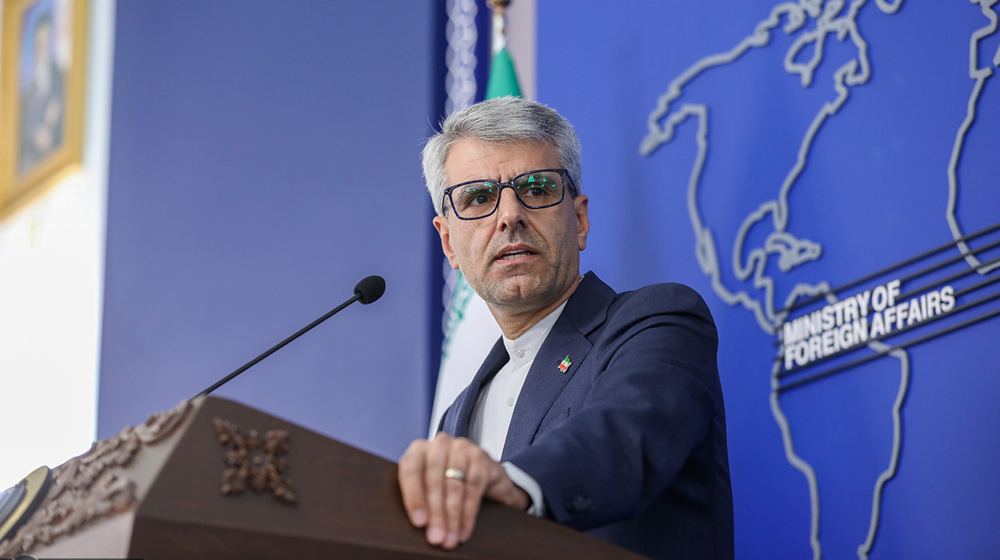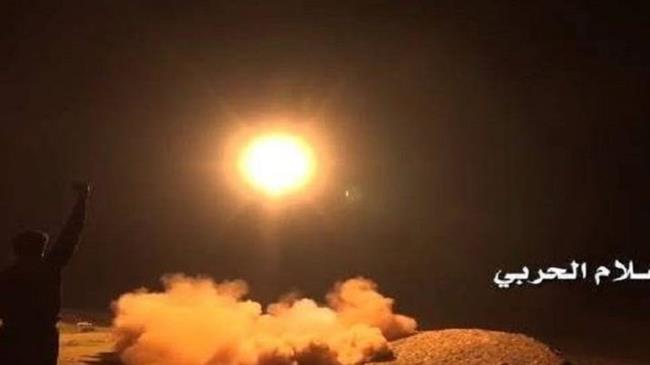Two Saudi soldiers killed in Yemeni raid on Najran
At least two Saudi soldiers have been killed in a retaliatory attack by Yemeni army forces in the kingdom's southern Najran region, a day after a military camp in the Saudi border area was targeted by a Yemeni ballistic missile.
The Arabic-language al-Masirah television network reported that Yemeni troops had also seized a weapons cache from Saudi forces during the raid on Shurfa military base in Najran.
Separately, Yemeni fighters blew up a car, belonging to Saudi mercenaries, in the Midi Desert in Yemen's northwestern Hajjah Province.
Also on Saturday Yemeni army forces, supported by allied fighters from the Houthi Ansarullah movement and those from Popular Committees, fired a domestically designed and developed ballistic missile at a military camp in Saudi Arabia’s southern border region of Najran in retaliation for the Riyadh regime’s campaign of military aggression.
Yemen's official Saba news agency, citing an unnamed military official, said the short-range missile was launched at Saudi National Guards camp on Saturday, adding that the projectile hit its designated target with great precision.
There were no immediate reports of possible casualties or the extent of damage.
Meanwhile, the so-called military coalition led by Saudi Arabia against Yemen claimed in a statement, carried by the kingdom's official Saudi Press Agency (SPA), that the coalition had intercepted the Yemeni missile, which had been fired from the northern province of Sa’ada.
Riyadh frequently reports intercepting missiles fired from Yemen, but various reports have pointed out that US-made Patriot interceptors often fail.
Separately, Yemen’s Arabic-language al-Masirah television network, citing a military official, reported that the Yemeni army also fired a Zelzal 2-type ballistic missile at a camp of Saudi soldiers in the kingdom's southwestern region of Asir on Friday night.
Earlier this month, the media bureau of Yemen’s Operations Command, for the first time, released a video of the army’s reconnaissance operations on the flashpoint western coasts conducted by a number of unmanned aerial vehicles.
It said most of the missile attacks against the Saudi-led coalition, either inside Yemen or inside Saudi Arabia, were carried out based on coordinates collected by Yemeni drones.
Saudi Arabia and some 20 of its allies, including the United Arab Emirates, Morocco and Sudan, launched the brutal war, code-named Operation Decisive Storm, against Yemen in March 2015 in an attempt to reinstall former Yemeni President Abd Rabbuh Mansur Hadi, a staunch ally of Riyadh, and crush the popular Ansarullah movement.
The offensive initially consisted of a bombing campaign but was later coupled with a naval blockade and the deployment of ground forces into Yemen.
The imposed war, however, has so far failed to achieve its goal, thanks to firm resistance mounted by Yemeni troops and Houthi fighters in defense of the city. The war was also launched despite warnings that it would compound the impoverished nation’s humanitarian crisis.
The Yemeni Ministry of Human Rights announced in a statement on March 25 that the war had left 600,000 civilians dead and injured until then. The war and the accompanying blockade have also caused famine across Yemen.
The Saudi-led aggression has also taken a heavy toll on the country's infrastructure, destroying many hospitals, schools, and factories. The United Nations has already said that a record 22.2 million Yemenis are in need of food aid, including 8.4 million threatened by severe hunger.
Several Western countries, the United States and Britain in particular, are also accused of being complicit in the ongoing aggression as they supply the Riyadh regime with advanced weapons and military equipment as well as logistical and intelligence assistance.
‘All wars have rules. All of those rules have been broken’ by Israel
VIDEO | Report flags India’s violation of rights of Rohingya detainees
Turkey's foreign minister meets Syria's de facto leader in Damascus
'Next to impossible' to rescue patients from Gaza's Kamal Adwan Hospital: Director
VIDEO | Vietnam current prosperity
Report blames gasoil exports for shortage at Iranian power plants
VIDEO | Hind Rajab Foundation names Israeli war criminals vacationing after Gaza genocide
VIDEO | Australians rally for Gaza ahead of Christmas festivities















 This makes it easy to access the Press TV website
This makes it easy to access the Press TV website